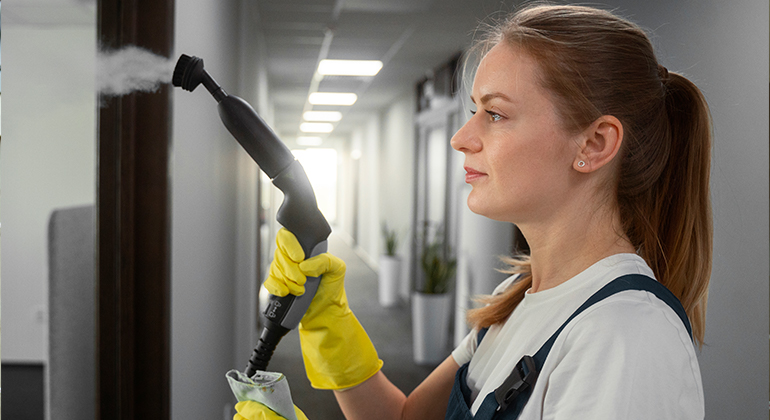
23 Sep
In the world of healthcare, the prevention of hospital-acquired infections (HAIs) stands as a paramount concern. Infections like these can slow a patient’s recovery, keep them in the hospital longer, and drive up healthcare expenses. A critical yet often underestimated factor in combating HAIs is the role of professional cleaning services. This blog explores the vital importance of professional cleaning in maintaining a sterile environment and safeguarding patient health.
The Frontline Defense Against Infections
Professional cleaning teams are the unsung heroes in the battle against HAIs. Equipped with specialized training, expertise, and tools, they implement stringent cleaning protocols tailored to healthcare settings. Their work goes beyond surface cleaning; it’s about creating a safe, germ-free environment conducive to healing and recovery.
Targeted Cleaning Strategies
The effectiveness of professional cleaning lies in its meticulous approach. Transmission of infectious diseases can occur most easily on frequently touched surfaces, such as doorknobs, bed rails, and medical equipment. Professional cleaners use EPA-approved disinfectants and follow best practices to eliminate harmful microbes, adhering to protocols that ensure every corner of a healthcare facility is sanitized.
Innovations in Cleaning Technology
The adoption of cutting-edge technology further amplifies the impact of professional cleaning services. From electrostatic sprayers that ensure even distribution of disinfectants to UV-C light technology that kills bacteria and viruses at the DNA level, these advancements offer an additional layer of protection against HAIs.
Training and Compliance
Professional cleaning staff undergo rigorous training focused on healthcare-specific cleaning standards and infection control procedures. Compliance with regulations and the preservation of a risk-free setting necessitates this expert knowledge. Continuous education ensures that cleaning teams are up-to-date with the latest guidelines and techniques in infection prevention.
The Impact on Patient Care
The correlation between cleanliness and patient care quality cannot be overstated. A clean hospital protects patients from HAIs and enhances their overall experience. Moreover, reducing infection rates through effective cleaning can significantly lower healthcare costs associated with treating HAIs.
Conclusion
By employing specialized techniques, adhering to strict protocols, and utilizing advanced technologies, professional cleaners provide an essential service supporting healthcare facilities’ core mission: to heal and protect. Investing in professional cleaning is not just a matter of cleanliness; it’s a commitment to patient safety, quality care, and the overall well-being of both patients and healthcare workers. As we move forward, the value of these services will only continue to grow, highlighting the indispensable role of professional cleaning in the healthcare industry.

